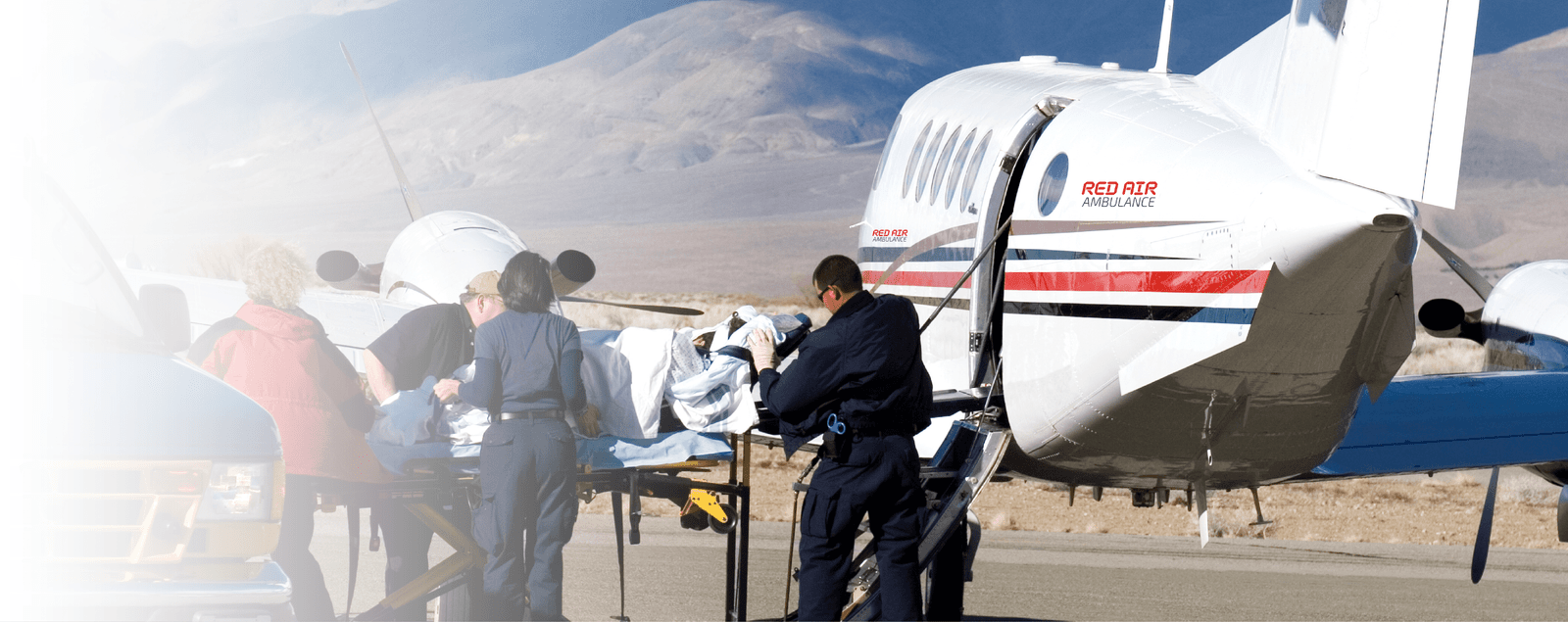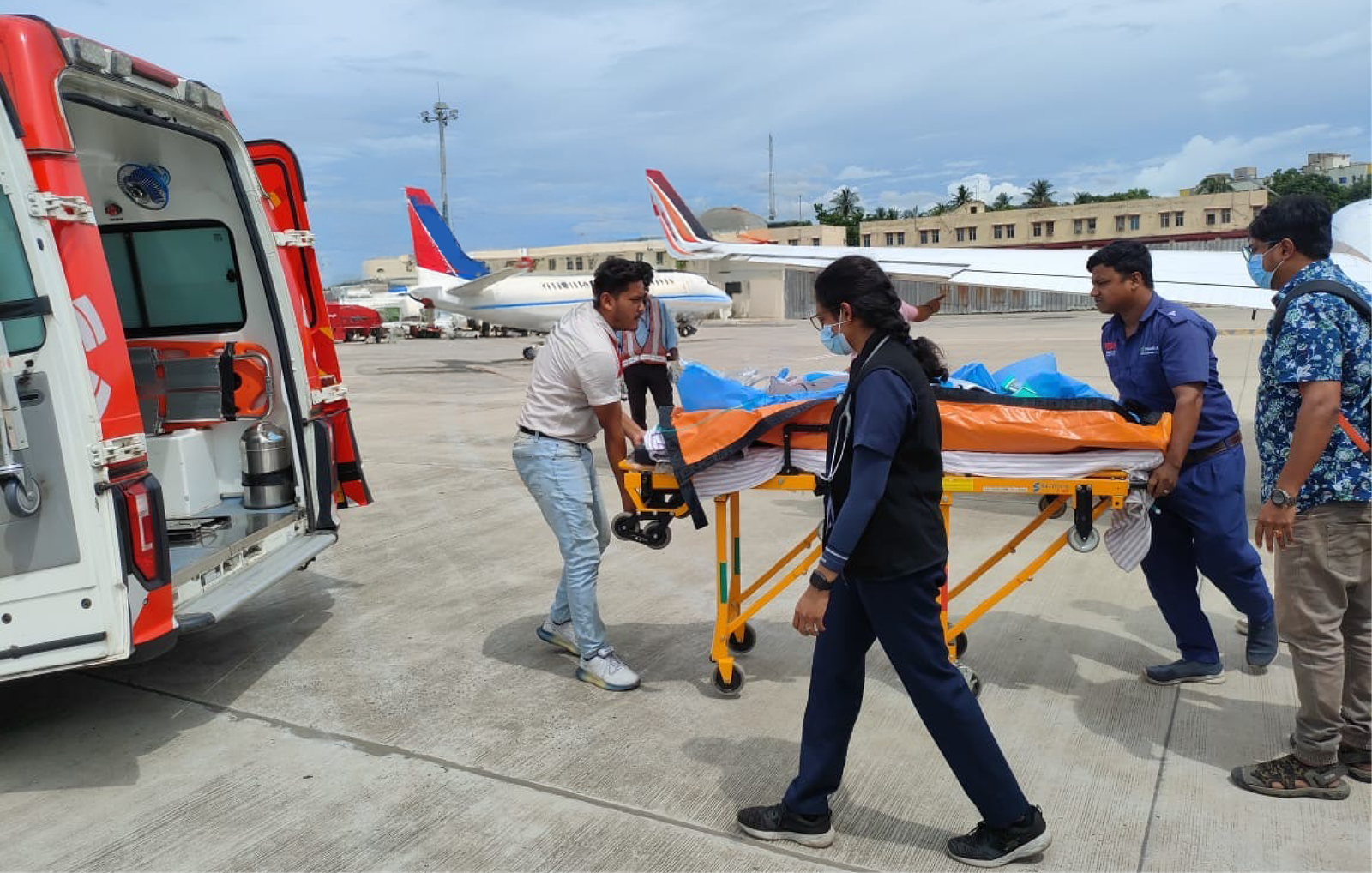When it comes to accessing critical healthcare over long distances, air ambulance services play a vital role in ensuring safe and efficient patient transportation. While they are not suited for emergencies requiring immediate action, air ambulance services in India are a lifesaving solution for planned medical transfers over distances exceeding 1,000 kilometers.
If you’re exploring the possibility of using an air ambulance in India, understanding its purpose, how it works, and its advantages will help you make informed decisions. Below, we explain everything you need to know about air ambulance services and why they’re an essential part of long-distance medical care.
What Is an Air Ambulance?
An air ambulance is a specially equipped aircraft, designed to transport patients requiring medical assistance across long distances. These planes are outfitted with advanced medical equipment, making them akin to flying intensive care units (ICUs). They are staffed by trained medical professionals, including doctors and paramedics, who provide continuous care throughout the journey.
Unlike traditional ambulances, air ambulances are exclusively used for planned medical transfers. Their usage requires meticulous planning, including coordinating with healthcare facilities and preparing the necessary medical equipment.
How Air Ambulance Services Work
Air ambulance services in India follow a systematic process to ensure seamless patient transportation. Here’s a breakdown of how they operate:
- Initial Consultation: The family or healthcare provider contacts an air ambulance company in India to arrange transportation. The patient’s medical history is detailed to determine the required care.
- Preparation and Coordination: Air ambulances are chartered planes, so they require 3–4 hours of preparation. This includes arranging the aircraft, assembling the in-house medical team, and equipping the plane with necessary medical devices such as ventilators, defibrillators, and monitors.
- Ground Transportation: Two separate ambulances are provided—one to transport the patient from their home to the airport and another to take them from the destination airport to the receiving hospital.
- In-Flight Care: During the flight, a dedicated medical team monitors and stabilizes the patient’s condition using advanced equipment.
- Handover at the Destination: Upon landing, the patient is transferred to the receiving healthcare facility for further treatment.
This carefully orchestrated process ensures that patients receive uninterrupted medical care during the transfer.
Advantages of Air Ambulance Services in India
Air ambulance services offer several benefits, making them an indispensable solution for long-distance medical transportation. Here’s why they stand out:
1. Long-Distance Transfers Made Easy
Air ambulance services provide a swift and safe means of travel for patients needing specialized treatment in cities or countries far from their location. Traditional road ambulances are impractical for long journeys, but air ambulances bridge this gap effectively.
2. Comprehensive End-to-End Care
Air ambulance services in India ensure seamless patient transfers from start to finish. Two dedicated ambulances—one for home-to-airport transport and another for hospital transfer—remove the logistical burden from families and guarantee continuity of care.
3. Advanced Medical Support
The aircraft is equipped with state-of-the-art medical technology, enabling the onboard medical team to monitor and stabilize the patient throughout the journey. This includes lifesaving devices like ventilators, cardiac monitors, and infusion pumps and RED Air Ambulance is equipped with all the mandatory medical support.
4. In-House Medical Team
A highly skilled medical team accompanies the patient on the flight. This team is trained to handle critical care scenarios and ensures that the patient remains stable during transit.
5. Customized Solutions for Unique Needs
Air ambulance services cater to a wide range of medical needs, including neonatal transport, inter-hospital transfers, and international medical evacuations. The process is tailored to the patient’s specific requirements, ensuring they receive the highest level of care.
When to Use an Air Ambulance?
Air ambulance services are suitable for specific scenarios, such as:
- Planned Medical Transfers: Patients who need to travel long distances for scheduled medical appointments or advanced treatments.
- Inter-Hospital Transfers: Moving a patient from one hospital to another to access specialized care or facilities unavailable locally.
- International Medical Travel: Patients requiring treatment abroad or returning to their home country for continued care.
It’s important to note that air ambulances are not designed for emergencies that demand immediate response, as they require thorough planning and coordination.
Who Can Benefit from Air Ambulance Services?
Air ambulance services in India are ideal for:
- Patients with Critical Conditions: Those with life-threatening illnesses or injuries requiring advanced care during long-distance travel.
- Neonatal and Pediatric Patients: Infants and children who need specialized care during transportation.
- Elderly Patients: Seniors with limited mobility or complex health conditions that make ground transport challenging.
- International Patients: Those seeking or returning from medical treatment abroad.
Factors to Consider When Choosing an Air Ambulance Company in India
Selecting the right air ambulance company in India is crucial to ensuring the safety and comfort of the patient. Here are key factors to evaluate:
- Medical Expertise: Verify that the company provides a skilled in-house medical team capable of handling critical care scenarios and we can proudly claim that RED Air Ambulance has got a skilled in-house medical team.
- Equipment Availability: Ensure the aircraft is equipped with essential medical devices to support the patient’s condition.
- Ground Support: Look for providers that include ground transportation as part of their service for seamless end-to-end care.
- Response Time: Although air ambulances require planning, the provider should work efficiently to meet the necessary timeframe.
- Reputation and Accreditation: Choose a provider with a proven track record and compliance with industry standards.
How Air Ambulance Services Are Evolving in India
The demand for air ambulance services in India has grown significantly in recent years. Companies are expanding their fleets, upgrading their medical equipment, and enhancing service quality to meet rising needs. Technological advancements, such as telemedicine, now allow onboard teams to consult specialists in real time, further improving patient outcomes.
Conclusion
Air ambulance services are a vital resource for long-distance medical transportation in India. Designed for long distance journeys they provide a lifeline for patients needing specialized treatment far from home. With comprehensive end-to-end care, advanced medical equipment, and skilled in-flight teams, these services ensure safe and efficient patient transfers.
For those seeking reliable air ambulance services, RED Air Ambulance stands out as a trusted provider. With a commitment to safety, efficiency, and exceptional care, RED Air Ambulance ensures that your loved ones are in capable hands during critical moments.
Take the first step towards secure and efficient medical transport—contact us today to learn more about their services and how they can assist you.
Frequently Asked Questions (FAQs)
1. What is an air ambulance?
An air ambulance is a medically equipped aircraft used for long-distance, planned patient transfers. It functions like a flying ICU, staffed by doctors and paramedics.
2. When should you use an air ambulance in India?
Air ambulances are ideal for non-emergency, long-distance medical transfers, inter-hospital transfers, or international medical travel requiring specialized care.
3. What medical care is provided onboard?
Air ambulances are equipped with ventilators, monitors, and other ICU-level tools. A skilled in-house team ensures continuous care during the entire flight.
4. Does air ambulance service include ground transport?
Yes. RED Air Ambulance provides two ground ambulances—one at the departure and one at the arrival—for seamless door-to-door patient care.
5. What should I consider when choosing a provider?
Look for a provider with advanced equipment, an experienced medical team, efficient coordination, and a strong reputation—like RED Air Ambulance.


 18001207004
18001207004
 January 13, 2025
January 13, 2025 Red Health
Red Health
